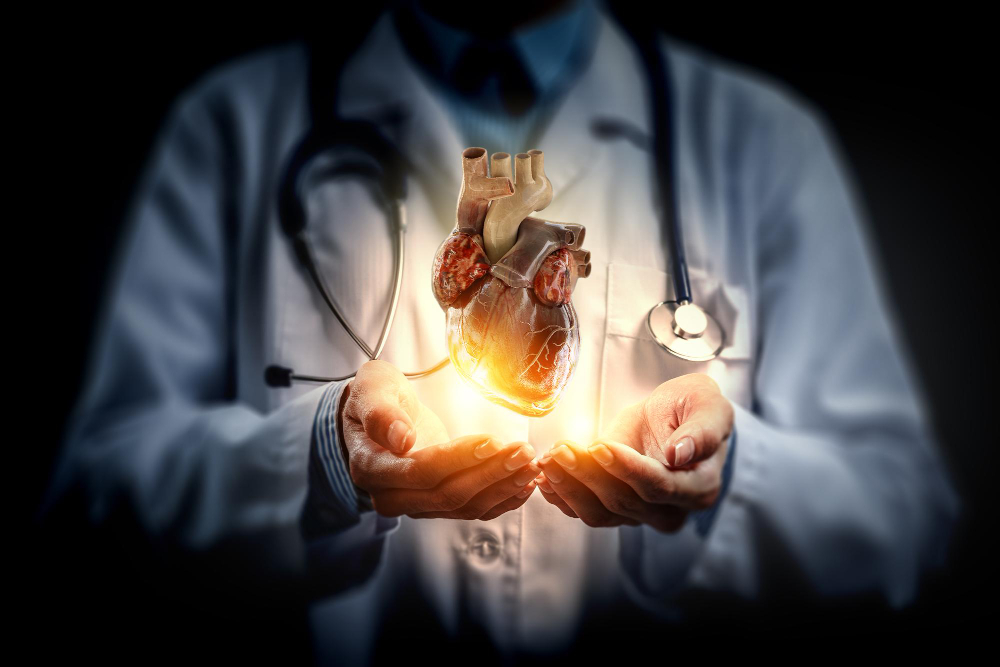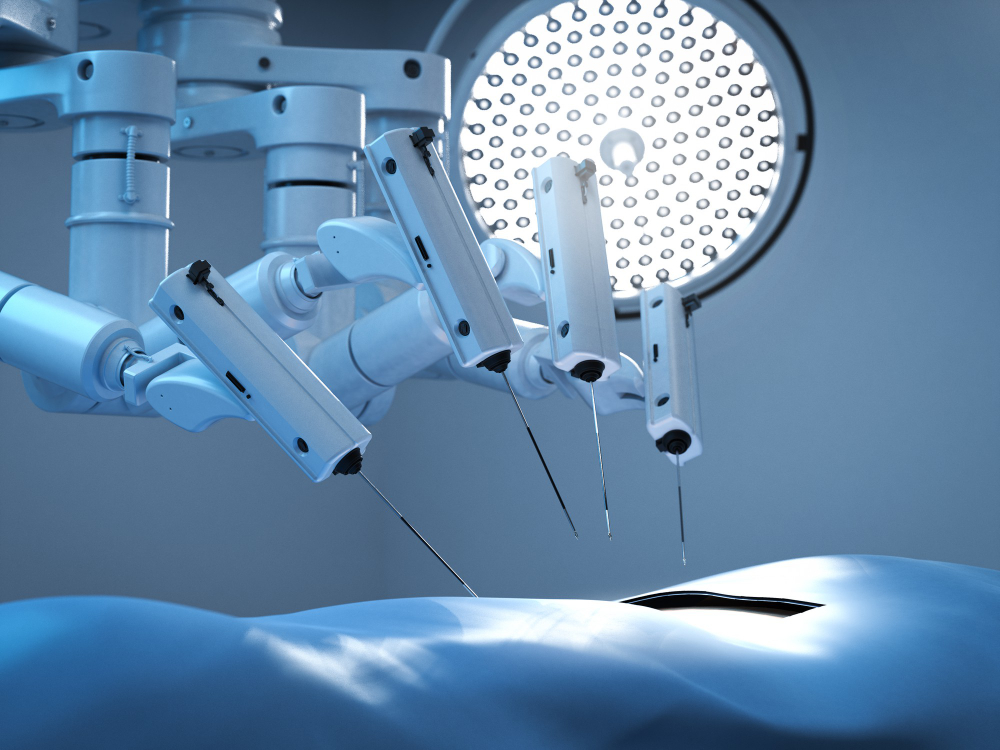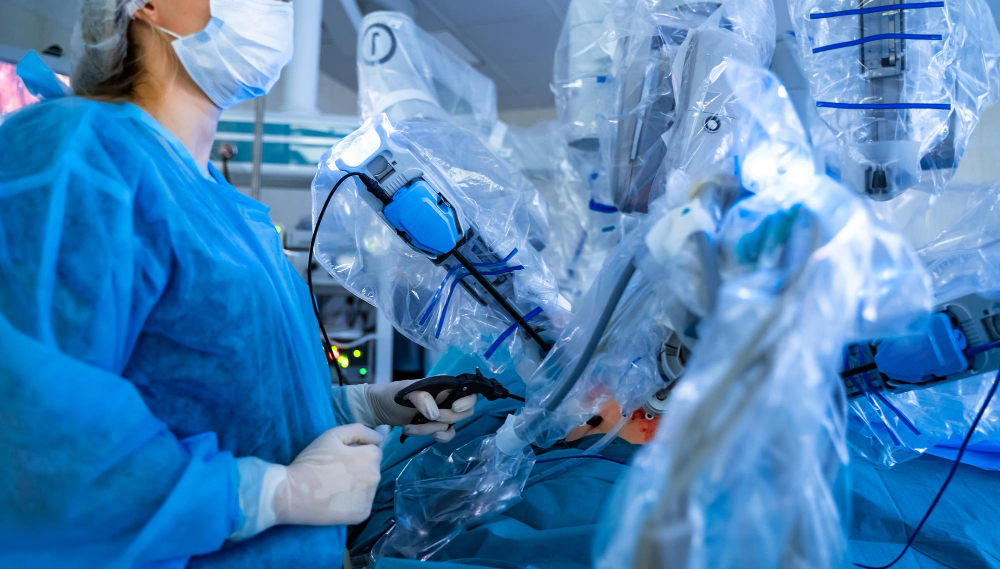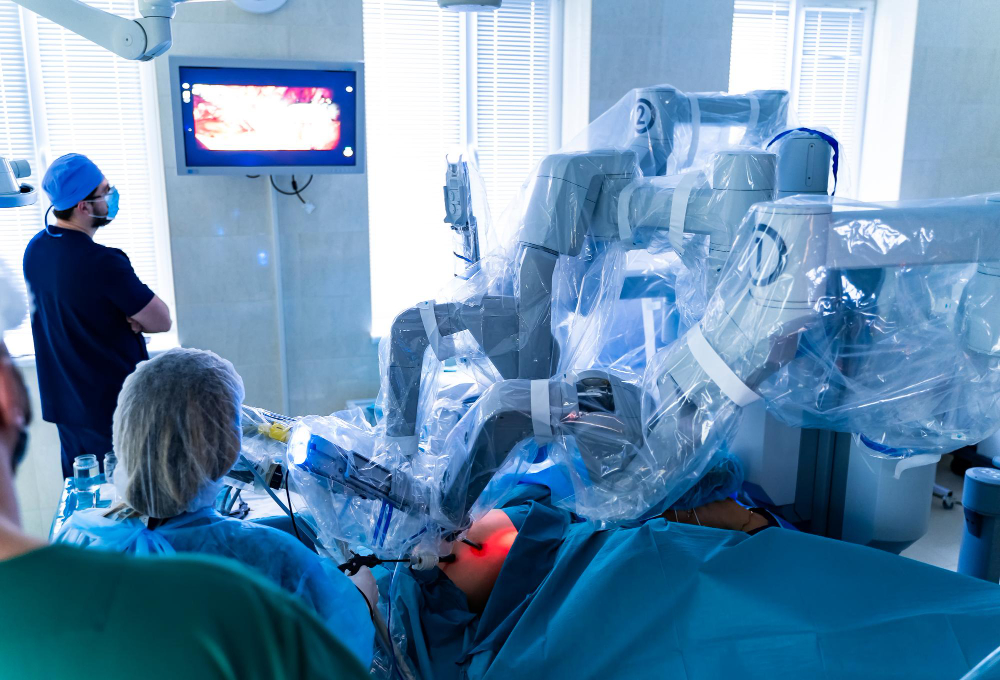Robotic Heart Surgery
Robotic heart surgery involves a surgeon using robotic arms to perform the operation through small incisions. This technique offers the advantages of reduced pain and shorter hospital stays, making it a desirable option. However, there are also drawbacks involved. To determine if you are eligible for robotic cardiac surgery, consult your healthcare provider.

What is robotic heart surgery?
Robotic heart surgery is a less invasive method of performing heart surgery that utilizes robotic devices, small cameras, and precise instruments to reach the heart without the need for a major incision or cutting through the breastbone.
How does robotic heart surgery work?
Robotic surgery differs from traditional surgery as the cardiac surgeon does not physically stand over the patient. Instead, they sit at a computer console which displays a high-definition video of the patient’s internal body on a screen, captured by a camera attached to an endoscope. The surgeon then performs the surgery by delicately controlling and maneuvering robotic arms that hold surgical instruments.
The robot imitates the precise movements of the surgeon’s hands, surpassing the level of accuracy that a human could attain. Special software is used to correct any shakiness in the surgeon’s grip.

Benefits to patients
The utilization of robotic technology in surgery allows surgeons to perform more precise and less invasive operations compared to traditional cardiothoracic surgery. In conventional “open” heart surgery, the chest is opened at the sternum bone, and a heart-lung machine is necessary. Traditional thoracic surgery entails cutting muscles in the back and separating ribs to access the thoracic organs. Robotic-assisted surgery provides various potential advantages, such as:
- Significantly less pain
- Less blood loss
- Less risk of infection
- Less scarring
- Shorter hospital stay
- Faster recuperation duration and back to regular routines
- Clinical results similar to traditional “open” heart surgery.
- Clinical and oncologic results that are similar to those achieved through VATS (video-assisted thoracic surgery)
Like any other surgical procedure, there is no guarantee of obtaining these benefits. The success of the outcomes is always contingent on several factors.
What medical conditions does robotic cardiac surgery address?
Robotic heart surgeries include:
- Mitral valve repair.
- Mitral valve replacement.
- Septal myectomy.
- Repair of the tricuspid valve can be done in conjunction with the repair of the mitral valve.
- Atrial septal defect (ASD) repair.
- Patent foramen ovale (PFO) repair.
- The extraction of tumors in the heart (such as myxoma or fibroelastoma) from the mitral or tricuspid valve.
- Coronary artery bypass graft (CABG).

What benefits does robotic heart surgery offer compared to traditional methods?
In conventional heart surgery, surgeons need to incise the chest in order to reach the heart for necessary repairs. This technique involves cutting through the breastbone and prying open the rib cage, which results in a substantial incision and unintended harm to the chest.
By utilizing a robotic method, surgeons can avoid the need to make an incision on the breastbone. Instead, they can insert instruments through small openings between the ribs. This approach significantly lowers the chance of complications such as infections and blood loss after surgery, greatly diminishes the appearance of scars, shortens hospital stays, and enables patients to resume their regular daily activities more quickly. Additionally, patients typically experience less pain during their recovery since they are not healing from a fractured breastbone.
At the University of Chicago Medicine, certain robotic heart surgeries can be conducted without the need for a heart-lung bypass machine, which helps lessen the chances of experiencing a stroke or other complications related to the nervous system.
Who is suitable for robotic heart surgery?
As the development and scope of robotic heart surgery advances, an increasing number of patients will be able to choose robotic procedures. However, it should be noted that there are certain situations where robotic surgery may not be a viable option.
Your surgeon will assess the appropriate robotic surgery option based on its potential to address your health issue effectively, lead to a favorable outcome, and minimize the chances of complications.
Although robotic surgery is often the solution to that inquiry, it may not be the most suitable option for a limited number of individuals.
Individuals with intricate problems concerning different areas of the heart or individuals with unusual heart abnormalities might find an open heart procedure more suitable. Moreover, in certain instances where a patient has severe vascular disease or has undergone a prior surgery that necessitated an incision on the right side of the chest, a robotic procedure may not be viable.
our main objective is to offer every patient superior care and achieve the most favorable result. While robotic surgery may lead us to that desired outcome, we are committed to providing access to advanced techniques and exceptional healthcare, even in cases where robotic surgery is not applicable.
What steps should I take to get ready for robotic heart surgery?
There are various ways to get ready for robotic heart surgery:
- Make sure to arrange transportation with someone to take you back home once you are discharged by your healthcare provider.
- Inquire with your healthcare provider about any specific medications you should avoid prior to your surgery. Only discontinue taking them if instructed by your provider.
- To optimize your healing process following the surgery, it is advised to refrain from using tobacco products for a few weeks prior to the operation. This will allow you to have improved airflow and facilitate better healing post-operation. By avoiding tobacco, you are ensuring that your wounds receive sufficient oxygen, aiding in their healing process.
- Cease consuming food and beverages at midnight prior to your surgery or at the designated time instructed by your healthcare provider.
What happens during robot assisted cardiac surgery?

Discuss the specifics of your procedure with your healthcare professional. The subsequent information outlines the typical order of events that will likely take place during robot-assisted cardiac surgery.
- Before the procedure commences, a medical professional will administer anesthesia to induce a deep sleep and prevent any pain sensations during the surgical operation. Additionally, a sedative might be administered beforehand to promote relaxation.
- After you fall asleep, a tube will be placed into your lungs through your throat. You will then be linked to a machine known as a ventilator, which will help with your breathing throughout the surgical procedure.
- The surgeon will create small incisions on the side of your chest that are similar in size to a keyhole. These incisions will line up with the spaces between your ribs.
- The procedure may require that you be connected to the heart-lung machine.
- Your surgeon will insert multiple robotic arms into these incisions, guided with precision, depending on the specific procedure being performed.
- The specified duties on the heart or nearby arteries are carried out by the robotic arms, which hold and control small instruments.
- Another incision will be made to insert a small video camera, which will offer a magnified, three-dimensional view of the area being operated on.
- From a console in the operating room, the surgeon will be able to manage the robotic arms and camera.
- After finishing the procedure, the surgeon will take out the instruments and seal the cuts.
Discuss with your medical professional the things you can expect to go through throughout your medical procedure.
What happens after robotic cardiac surgery?
After robotic cardiac surgery:
- After undergoing robotic heart surgery, you will be transported to an intensive care unit (ICU) by a healthcare professional.
- The length of your stay in the hospital will vary depending on the procedure you undergo.
- Before you are discharged, you may receive a transthoracic echocardiogram (TTE) as part of your medical evaluation.
- It might take at least two weeks or longer for you to completely recover.
What are the risks of robotic heart surgery?
Similar to any surgical procedure, there are risks associated with a minimally invasive technique that are also present in traditional open-heart surgery. These risks may consist of complications such as bleeding, infection, stroke, and arrhythmias, which refer to an abnormal heartbeat. Nonetheless, it is generally observed that the likelihood of experiencing these complications is lower in a robot-assisted or minimally invasive surgery compared to a traditional open-heart surgery. Additionally, there is a slight possibility that surgical complications may necessitate a surgeon to switch to an open-chest approach.
Treatment in Türkiye:
The medical staff of surgical teams, doctors and consultants in Rehab Türk can provide the best treatment options and free consultations – by striving to keep abreast of the latest medical technologies and methods.
